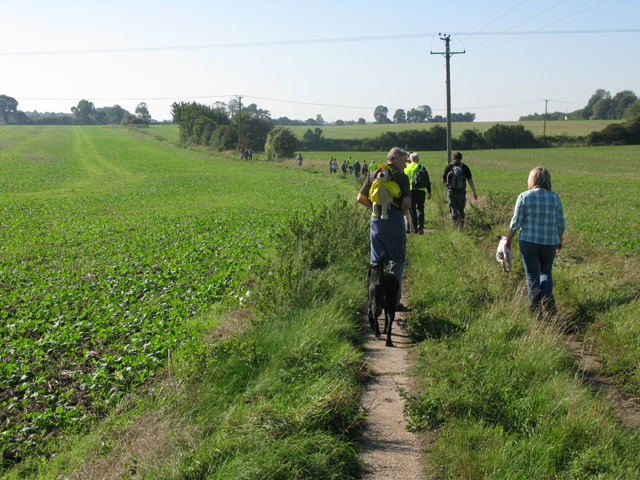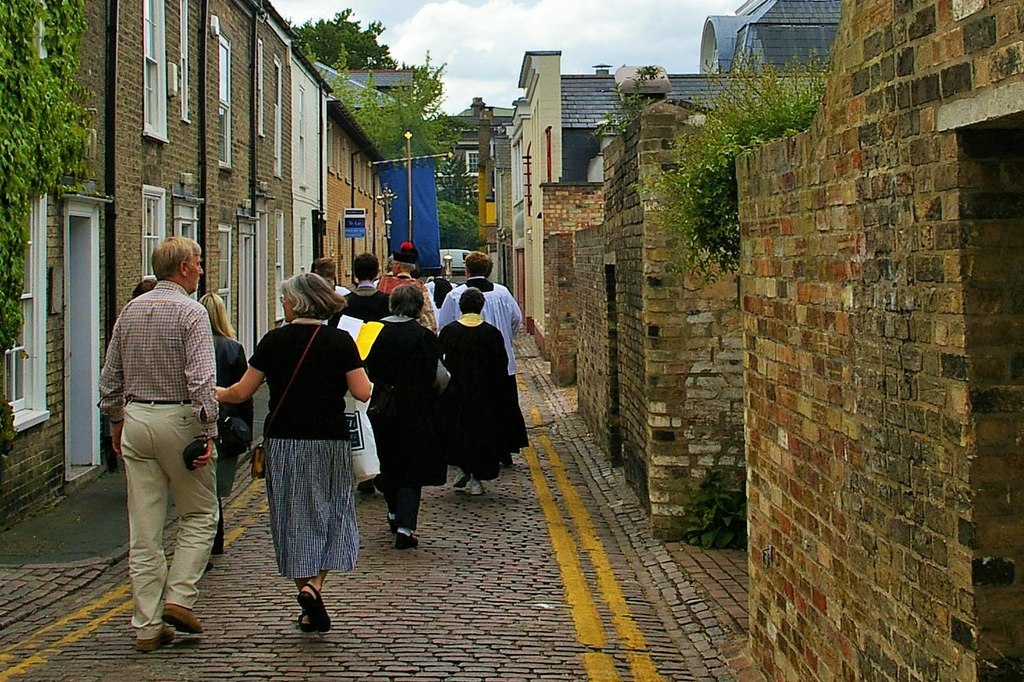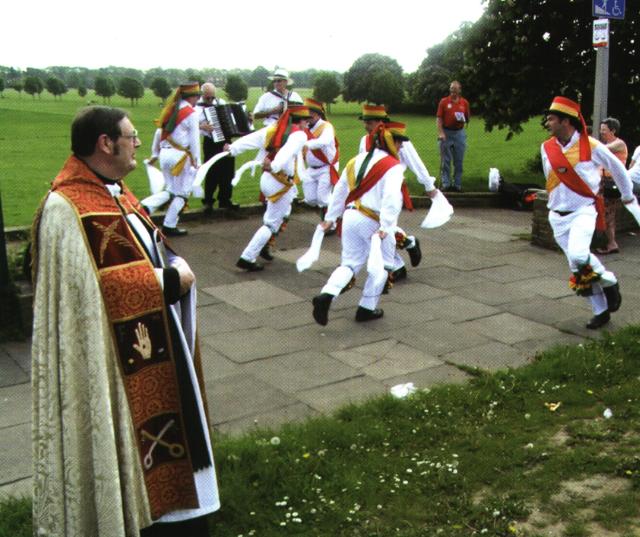This summer Slow Ways is introducing a new tradition with old roots, the Great Slow Ways Waycheck
The waycheck is a ‘new tradition’ based on the old tradition of beating the bounds, where locals walked the boundaries of their parishes. This encouraged them to know the land with their feet, plus claim it and establish it, in the days before reliable maps were readily available. The public ceremony refreshed residents and neighbours’ memories of parish boundaries, through the physical act of walking. (There are still some places where beating the bounds is practiced, as seen in this article from the Open Spaces Society).
For many people in Britain in times gone by, the village in which you were born was likely to be where you lived and died: you would be baptised, married and buried in the same church. The church was the cornerstone of the parish, and the parish and community were coterminous.

There aren’t many people who would ever agree we should go back to such a system. Young people leave their hometowns and head for cities, while others yearn to escape the cities for picturesque rural communities. Although in the past only the wealthy could afford horses, now bikes, cars, buses and trains make it easy to leave your home parish, even if only for the day. Some say this means a lack of connection to our communities, but taking the time to walk together can help strengthen those bonds.

In traditional beating the bounds ceremonies, nobles from the town would walk the boundaries, accompanied by a few young boys. The reason for the youthful accomplices was so that someone would be in attendance who would live to remember the ceremony in years to come. Unfortunately for the boys, the ceremony sometimes involved not just beating the grounds with tree boughs, but also the boys receiving a beating as well. No doubt they were happy to see modern surveying techniques and reliable maps make the practice obsolete.
Those beating the bounds were translating physical reality into shared memory, but we now face a different problem.
We can commit to walking every Slow Way until every place in Britain has at least one verified route connecting it to any other place. That GIS-powered modern map is then saved in the cloud and accessible by all on the Slow Ways website and app, but if we don’t check over these routes regularly, it will become an unreliable resource. The routes will exist in digital form only, and those attempting to walk them may find them to be outdated; overgrown, built over or otherwise altered.

There is only one way to check if these routes are suitable for walking: they must be walked. Slow Ways has already done amazing things, reconnecting people to paths they may have never been aware of in their local areas. With the Waycheck, we are asking walkers to commit to renewing their knowledge of the routes every year, and in doing so keep the Slow Ways network up to date, and keep paths open for us all to enjoy.
Join the Great Slow Ways Waycheck today. (yng Nghymraeg) To learn more, visit JSTOR Daily: Beating the Bounds and Historic Royal Palaces: Beating the Bounds. You can also find and follow us on Instagram, Twitter and Facebook.